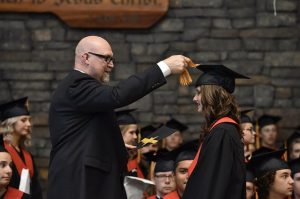Servicing on student loans deserves a closer look, as students head to college this month with money in their pockets—and heavy loans on their backs to pay off. Rightfully described as a “ticking time bomb,” student loan debt hit $1.53 trillion in June 2018, according to the Federal Reserve Board, and is the second largest driver of consumer debt in the United States.
The issue heated up in 2015, when the Consumer Financial Protection Bureau (CFPB), then headed by Richard Cordray, issued a report announcing widespread servicing failures by both federal and private student loan borrowers and the start of a plan to reform servicing practices.
That plan was cut short with Cordray’s resignation in November 2017, and successor Mick Mulvaney’s repeal of much of the bureau’s work on behalf of U.S. consumers. Business reporters have the opportunity to report an enterprise story that’s under the radar by answering one or more of the following questions:
What legal actions can ensure fair play on student loan servicing?
Before he left the CFPB, Cordray got the ball rolling by suing Navient, the second largest servicer of federal student loans, in January 2017. That prompted similar actions by attorneys general in several states (Illinois, Washington, Pennsylvania, and California). Have these state officials moved ahead with their actions? Have their lawsuits prompted others to go to court for student borrowers? Call your state’s attorney general and find what legal action your state is taking to help students—or not—why.
Is there a student loan “debt clinic” available in your zip code?
These lawsuits can take years to settle; in the meantime, three-quarters of all student loan borrowers (33 million of 44 million) qualify for loan forgiveness programs, but only a fraction know about their options, according to the American Federation of Teachers (AFT). AFT began offering student loan “debt clinics” at their affiliate chapters in 2016 to help members evaluate their repayment choices. In 2018, clinics are scheduled in Houston, Lawrence, Mass., western New York, Milwaukee and Madison, Wis., and Los Angeles. Attend one of these clinics, if they’re in your circulation area, or call your local AFT affiliate and ask if they’re thinking of scheduling a clinic. Check out AFT’s dedicated resource for members at forgivemystudentdebt.org and contact Ori Korin (okorin@aft.org) for more information.
Host a “debt clinic” for your readers
Use your news organization’s social media channels to host your own student loan “debt clinic” for readers, assembling a panel of students currently in school, recently out of those, and those who have been paying off their loans for five, 10, and 15 years or more. But first, study up on loan servicing choices listed on the Department of Education’s student loan website, which includes information on: income-driven repayment plans, student loan forgiveness programs, such as Public Service Loan Forgiveness, and debt consolidation. Invite a consumer affairs or student loan expert to host the panel. Your goal: To help reduce your reader’s collective debt by informing them on the steps they need to take to reduce their debt.











